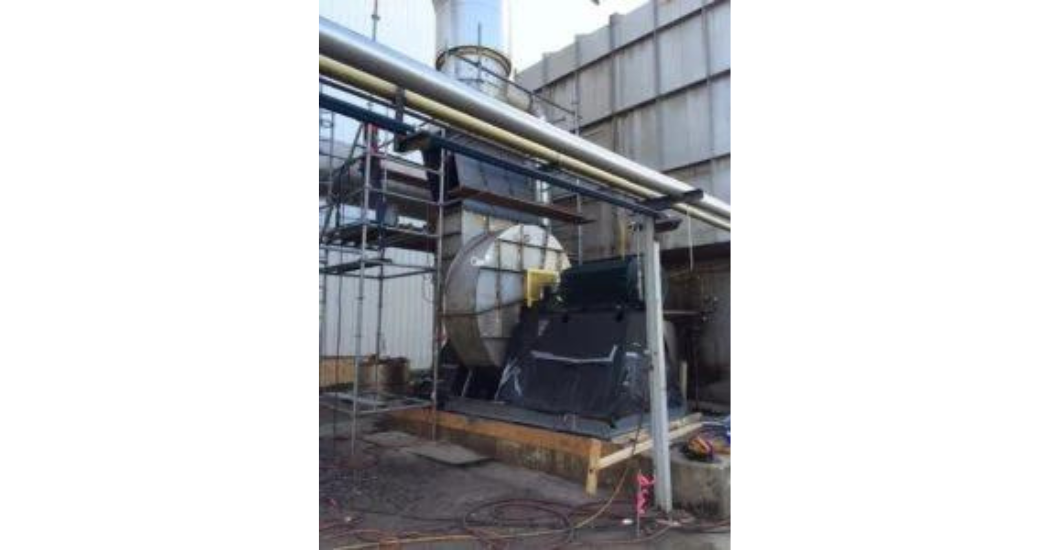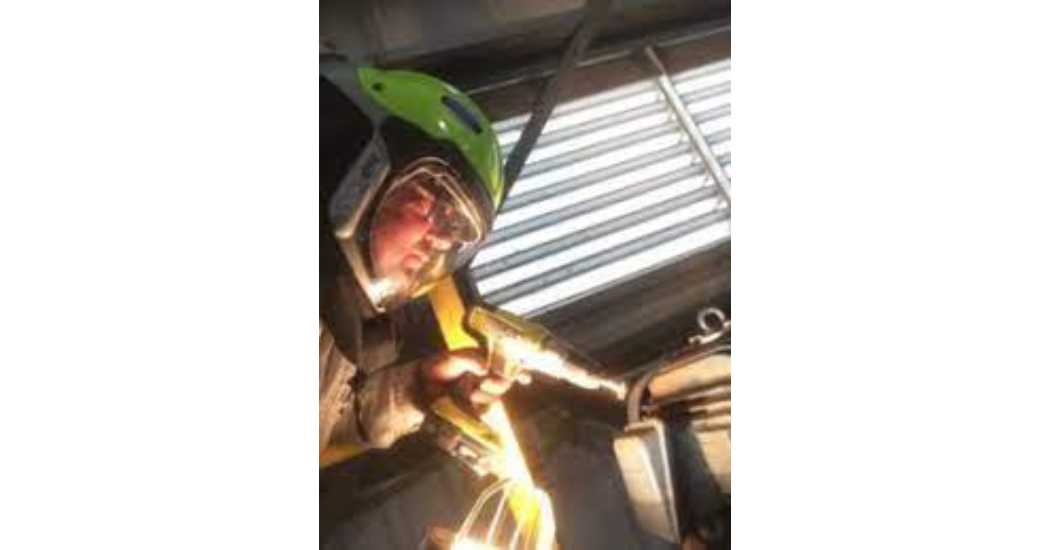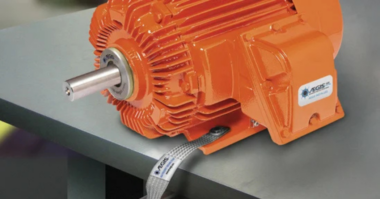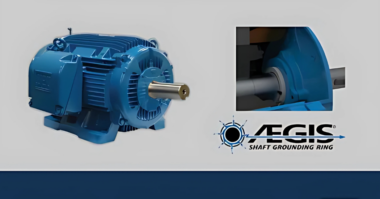During the early months of 2017, at Red Trail Energy‘s ethanol facility in North Dakota, there was a recurring issue with the premature failure of ball bearings in several large motors. Replacing motor bearings isn’t cheap. But for a production plant, the actual cost of repair is a drop in the bottle. What really hurts is the downtime from repair causing lost production. And lost revenue.
The plant manager soon had enough of these frequent interruptions and called in a grounding system specialist to troubleshoot the three problem motors.

The plant’s 400 hp HVAC motor
Scott Fisher, at Sustainable Grounding Systems, has a long history with Red Trail Energy. He arrived at the plant in May 2017 and took initial readings from three problematic motors: two centrifuge motors (30 and 150 hp) and one 400 hp fan motor. He confirmed that the bearings in these motors had premature damage, well beyond the expected ordinary wear and tear.
The leading suspect? Stray voltage from variable frequency drives. VFDs cause voltage to build upon the shafts of the motors they control. That voltage tends to discharge through the path of least resistance: the bearings. This shaft voltage discharge causes the bearings to wear, and fail, prematurely.
Fisher’s solution was to install AEGIS® Shaft Grounding Rings. Following AEGIS best practices, he installed an AEGIS SGR on each centrifuge motor, and an AEGIS PRO Ring on the 400 hp motor.
The follow-up shaft voltage readings from the motors showed significant improvement. Measurements as high as 19 volts dropped to less than 1.3 volts, which is too low to cause premature damage to the bearings.

Scott Fisher installs an SGR on one of the centrifuge motors
The curious reader might wonder how permanent the AEGIS solution was. It’s a good question! And the good answer is that now, almost four years later, AEGIS is still working. These motors have yet to fail again due to electrical bearing damage. Over the past four years, AEGIS rings have saved this plant tens of thousands, if not hundreds of thousands, of dollars. That’s a pretty good return on investment!
This is adapted from a story published at ChemicalProcessing.com




